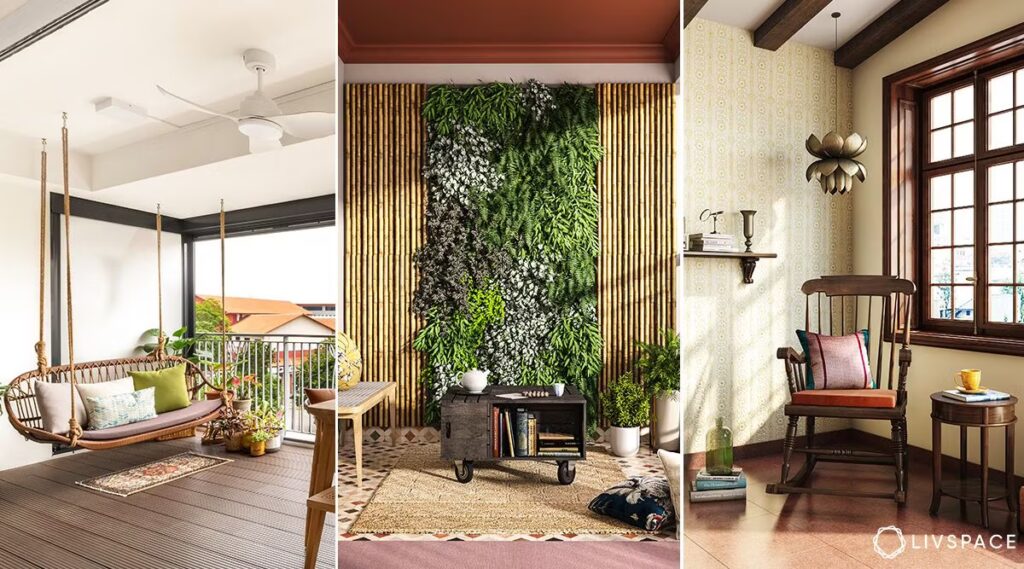As environmental awareness grows, Canadian households are embracing eco-friendly interior design to reduce their carbon footprint and create healthier living spaces. Sustainable design prioritizes materials, energy efficiency, and mindful practices that benefit both the planet and homeowners. Here’s a comprehensive guide to eco-friendly interior design choices tailored for Canadian homes.

Why Eco-Friendly Interior Design Matters
Eco-friendly design not only supports environmental conservation but also enhances indoor air quality and lowers energy costs. With Canada’s vast natural resources and seasonal climate variations, making sustainable choices ensures comfort and durability while respecting the environment.
1. Opt for Sustainable Materials
Choosing sustainable materials is the foundation of eco-friendly interior design. Look for renewable, recycled, or upcycled options that reduce waste and minimize environmental impact.
- Wood: Choose FSC-certified wood for furniture or flooring to ensure responsible forestry practices.
- Bamboo: A fast-growing and renewable resource, bamboo is an excellent choice for flooring and decor.
- Recycled Materials: Consider furniture or fixtures made from reclaimed wood, recycled metal, or glass.
Pro Tip: Avoid products with harmful chemicals like formaldehyde, often found in traditional plywood or MDF.
2. Invest in Energy-Efficient Lighting
Lighting plays a significant role in eco-friendly interior design. Replace traditional incandescent bulbs with energy-efficient options like LEDs or CFLs.
- Natural Lighting: Maximize natural light with large windows, skylights, and strategically placed mirrors.
- Smart Lighting: Install smart systems that allow you to control brightness and energy usage via mobile apps or voice assistants.
Bonus: Energy-efficient lighting reduces electricity bills and has a longer lifespan.
3. Choose Eco-Friendly Paints and Finishes
Traditional paints and finishes often contain VOCs (volatile organic compounds) that harm indoor air quality.
- Low-VOC Paints: Opt for low- or zero-VOC paints to minimize harmful emissions.
- Natural Finishes: Use natural oils, beeswax, or water-based stains for wood furniture and flooring.
Sustainability Tip: Look for Canadian brands that prioritize eco-friendly formulations.
4. Incorporate Natural Textiles
Fabrics and textiles made from natural or recycled materials are sustainable and stylish.
- Organic Cotton: Ideal for curtains, bedding, and upholstery.
- Linen and Hemp: Durable, biodegradable, and versatile for various applications.
- Recycled Fabrics: Rugs, cushions, or throws made from recycled materials reduce waste while adding charm.
Style Suggestion: Earthy tones and neutral shades align with the eco-friendly aesthetic.

5. Embrace Second-Hand and Vintage Finds
Thrift stores and vintage shops are treasure troves for unique, sustainable pieces. Repurposing or upcycling furniture reduces demand for new production and gives older items a second life.
- Upcycle Projects: Transform old cabinets into storage units or convert vintage crates into tables.
- Antiques: High-quality vintage furniture often lasts longer than modern mass-produced alternatives.
6. Prioritize Energy Efficiency
Energy-efficient homes are eco-friendly by design. Incorporating energy-saving practices and appliances can make a significant difference.
- Windows: Install double-glazed windows to improve insulation.
- Appliances: Choose ENERGY STAR-certified appliances for kitchens and laundry rooms.
- Heating and Cooling: Use programmable thermostats and consider renewable options like solar panels.
7. Add Indoor Plants for Greenery
Indoor plants enhance air quality and bring a natural element to your home. Popular low-maintenance options include:
- Snake Plants: Effective at filtering air and thriving in low light.
- Peace Lilies: Known for removing toxins and adding elegance.
- Succulents: Perfect for beginners, requiring minimal care.
Design Idea: Create a vertical garden or use hanging planters to save space.

8. Go Plastic-Free Wherever Possible
Eliminating plastic is a critical step toward sustainability.
- Natural Materials: Choose baskets made from jute or wicker instead of plastic storage bins.
- Glass and Metal: Opt for glass jars, metal fixtures, or stone countertops for durability and eco-friendliness.
9. Support Local and Sustainable Brands
Buying from Canadian companies that prioritize sustainability reduces your carbon footprint by minimizing transportation emissions. Look for furniture, decor, and materials made locally using eco-conscious methods.

10. Design for Longevity
Avoid fast furniture and trendy designs that might feel outdated quickly. Invest in timeless pieces that are durable and made to last.
- Neutral Bases: Start with a neutral foundation that you can refresh with seasonal decor.
- Modular Furniture: Flexible designs allow for rearranging or repurposing over time.
Final Thoughts
Eco-friendly interior design is more than a trend—it’s a commitment to sustainable living. By incorporating natural materials, energy-efficient solutions, and timeless designs, Canadian households can create homes that are both beautiful and environmentally responsible. Whether you’re redecorating a room or building a home from scratch, these sustainable choices make it easy to design with the planet in mind.